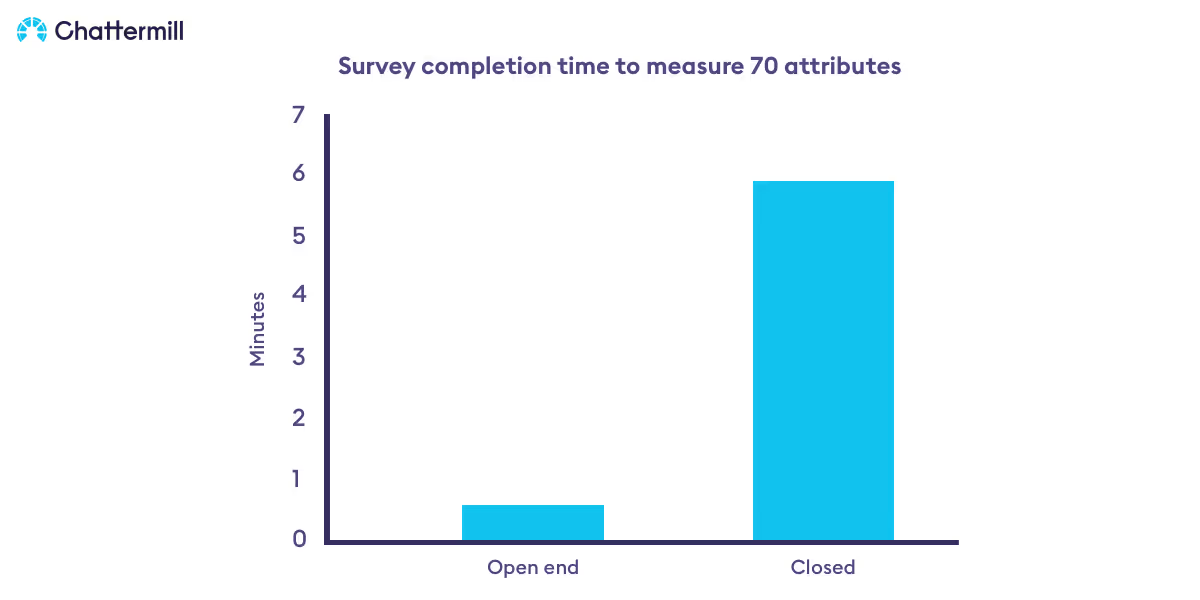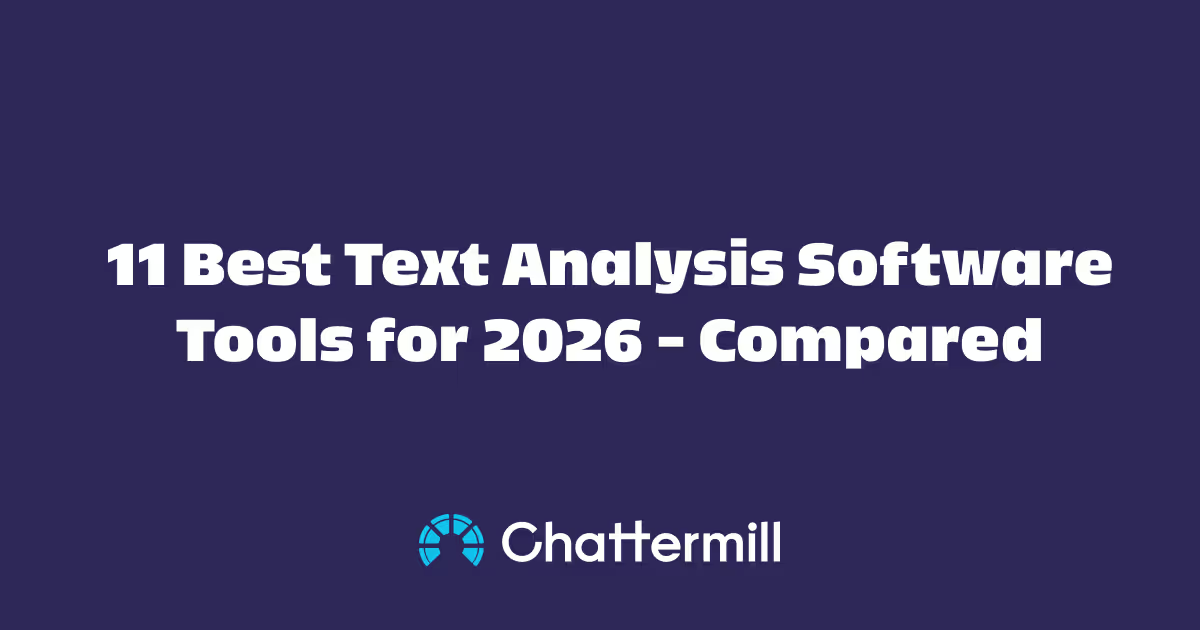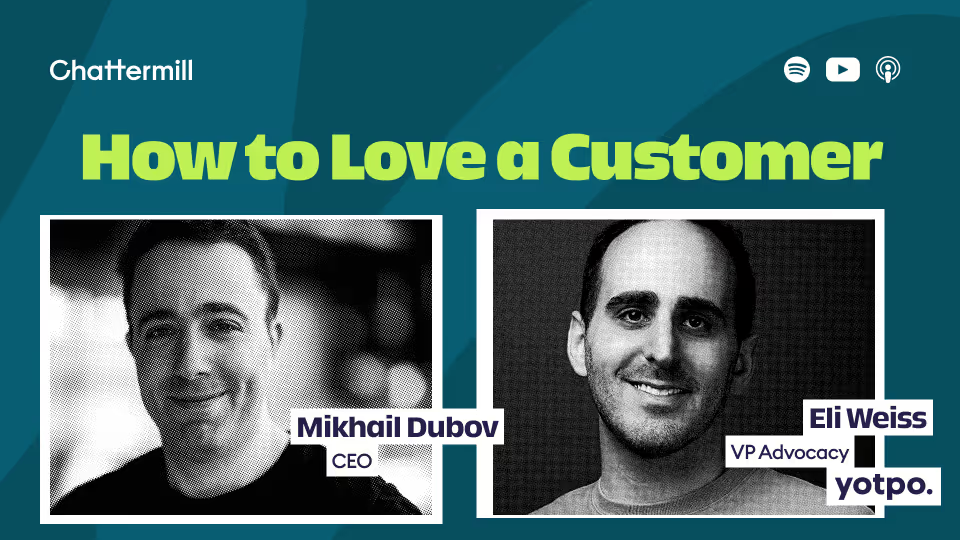
Leading CX companies are switching up how they collect feedback. If you haven't started already, it's never been more critical to learn how open-ended feedback can help you develop a deeper connection with your customers. It's time CX pro's rethink how they survey customers.
What Are Open-Ended Questions?
Open-ended questions ask people to provide answers in their own words and are designed to elicit more information than is possible in a multiple choice survey question format.
The answers could come in the form of a list, a few sentences or something longer such as a speech, paragraph or essay.
Writing a good open-ended research question can be a tricky balancing act. It should be designed so it prompts users to provide useful information and elaborate responses that are free of restraint.
Examples Of Open Ended Questions
Examples of open-ended questions include:
- What almost stopped you from completing the purchase?

It's Time To Modernise Feedback Collection
Before we had the technological capability to analyse, open-ended questions at scale, people carrying out customer research relied on close-ended survey questions. For a long time, close-ended questions served a valuable purpose and helped people understand customers at a scale that wasn’t possible with face to face interviews.
However, extensive multiple-choice close-ended question surveys are now fading out and becoming a relic of the past. They were used by analyst’s because it made their job of quantifying customer feedback easier. Open-ended survey questions were overlooked because it was challenging to analyse and quantify text data at scale. But the irony is that understanding customers through multiple-choice surveys is the worst customer experience ever.
I’m sure many of you have received a follow-up survey after a purchase that asks you to complete a 10-minute survey. The image below is a snapshot of a long multiple-choice close-ended survey.

Let’s stop pretending that any customer who in the next 20 minutes will check Twitter, LinkedIn, Gmail, Whatsapp and Youtube has the attention span to complete that survey. With attention spans shortening year on year. Sending out extensive close-ended surveys just isn’t going to cut it in today’s competitive world for people’s attention.
Just as sales and marketing professionals have stopped door-to-door selling, and expensive print advertising in favour of more advanced methods of acquisition. Customer insight professionals need to embrace new techniques of feedback collection to understand the customer and build deeper empathy with how they feel about their experiences.
Close Ended Survey Questions Are Harming Your CX
No matter how good your subject line is in the email. When you send out traditional close-ended surveys, you will end up with a low response rate from customers.
People lack the time and patience to complete laborious surveys. When people are asked to complete sometimes 40 to 50 questions, very quickly they will get bored, and either exits the survey or skip over questions. How many of you have rushed rapidly over a survey to get the free promotion offer? Naturally, people who complete the survey will spend time on the questions they care about, but little consideration into the rest of their answers.

If you knew your customers had skipped questions and put little thought into their answers, would you treat that data as reliable? It's highly unlikely. Some companies will analyse this data as an accurate representation of customer opinion. And base decisions on that data set — a reality that does not reflect how the customer feels about their experience.
So not only is your data unreliable but you'll also have a small sample size due to low completion rates. You'll collect a sample size that misses out on capturing a complete understanding of your customers. If you want to measure something and improve it, you need high-quality data that is representative of your customers. Without it, you won't extract relevant insights and you'll have an incomplete and shallow understanding of your customers.
Start Using Open-Ended Survey Questions
The path forward to capturing better quality feedback from customers isn't creating a fancy digital survey, and it's not asking less close-ended questions. On the contrary, It's quite simple but yet so powerful that it can help transform your customer experience and how you understand your customers.

It starts by asking open-ended questions in your surveys. With cutting edge technology, it's now accessible for UX, Research, Product and CX professionals to analyse the customer verbatim in open-ended feedback. The closed-ended survey is being replaced, and the people who are embracing open-ended feedback are capturing significantly more insight.
Previously there were technical barriers and a lack of frameworks to analyse open-ended feedback. It was difficult for research studies to make full use of open-ended feedback because quantifying results was a huge pain. But those problems are now no longer an issue, and you can start analysing text data efficiently and quickly.

Open-ended surveys have significant advantages when it comes to completion rates. Typically, an open-ended question survey such as Net Promoter Score takes no more than 30 seconds. Asking the customer, "How likely are you to recommend Company X to a friend?" and an open-ended follow-up question to allow the respondent to feedback what is most important to them.
The shorter survey results in a much higher survey completion rate of 20%. Much higher than the average for a close-ended survey which has on average a 3% completion rate. The 3% is almost always accompanied by an incentive discount or promotion to encourage users to complete the survey — expensive when trying to maintain a regular flow of feedback for analysis.
Customer's typically don't want to commit to completing a long survey, and a short open-ended survey fits much better into their lifestyle and behavioural trends. You save customers a lot of time, and if you want to survey customers frequently, then immediately the advantages of switching to open-ended are evident. Not only will you make your customers happier, but surveys will collect a much larger sample size of data and provide a comprehensive understanding of the customer.
But the benefits don't just stop at completion rates and sample size. Customer verbatim in open-ended questions provides better quality insights in comparison to a closed-ended survey question.
Open Ended Questions: The Advantages
Shorter Surveys
Some of our customers measure around 50-70 attributes related to their customer experience, covering the full breadth of the customer journey. Those attributes are defined from analysing open-ended feedback at scale. To get the same level of insight from a close-ended survey, you'd need to send out a survey with 50-70 questions asking a question about each attribute.
The quality of answers will be of a lower standard due to fatigue when answering the survey, but you are also second-guessing what you think is important to the customer. By asking a narrow range of predefined questions, you'll potentially overlook the aspect of the customer experience that matters most to your customers.

Better Insights
When you ask open-ended questions, you reveal what we call the "unknown unknowns" about your customers. When you ask what matters to your customers, they tell you things that you would not think to ask. You will uncover insights that would have remained hidden out of sight that could significantly move the needle forward for your business.
For example, a well-known flower delivery platform, Bloom & Wild, noticed when analysing the feedback from open-ended questions that customers were getting upset. They discovered upon receiving flowers customers thought they were 'skinny' and did not appear 'in bloom'.
Acting on the feedback, Bloom & Wild introduced pre-purchase education on why 'in bud' is the way to go. The change reduced refund rates by 37% YoY and increased NPS of recipients by 193%. Without open-ended feedback that insight would have remained out of sight hidden as an 'unknown unknown'.
The example of Bloom & Wild brings to light another advantage of collecting open-ended feedback. Had they relied upon closed-ended survey questions for customer understanding, they would have only received a score or a rating. That score wouldn't have provided an actionable insight to improve the customer experience and understand moments in the customer journey that bring happiness and dissatisfaction.
Language Is Universal
People don't give feedback just from surveys, and open-ended feedback can live in the app store, emails, social media, chat transcripts and more. By opening up data to collection beyond multiple-choice surveys, you begin to understand how customers feel across different touchpoints — increasing the volume of feedback.

Stop for a second and count all the different touchpoints available to you when interacting with your brand. How many did you count? I'm guessing most of them have some form of voice or text data in the interaction. Maybe it was leaving a piece of feedback on the app store or interacting with a chatbot. Perhaps you spoke to some over the phone or sent an email? The possibilities to capture text data far outweigh closed-ended questions.
Now think about the options of collecting customer feedback via closed pre-set questions asking for a scored rating. Outside of surveys, it's not possible to obtain a score from a customer on well you're doing to make their experience satisfactory. By limiting the amount of feedback you collect to close-ended questions, you have a lot less data at your fingertips to measure and improve your customer experience over time.
Conclusion
By now, hopefully, you have a strong understanding of the scope and depth of insight available to you when start collecting open-ended feedback. If you haven't considered analysing customer verbatim at scale, then get in touch and see what hidden insights you have in your customer feedback.















